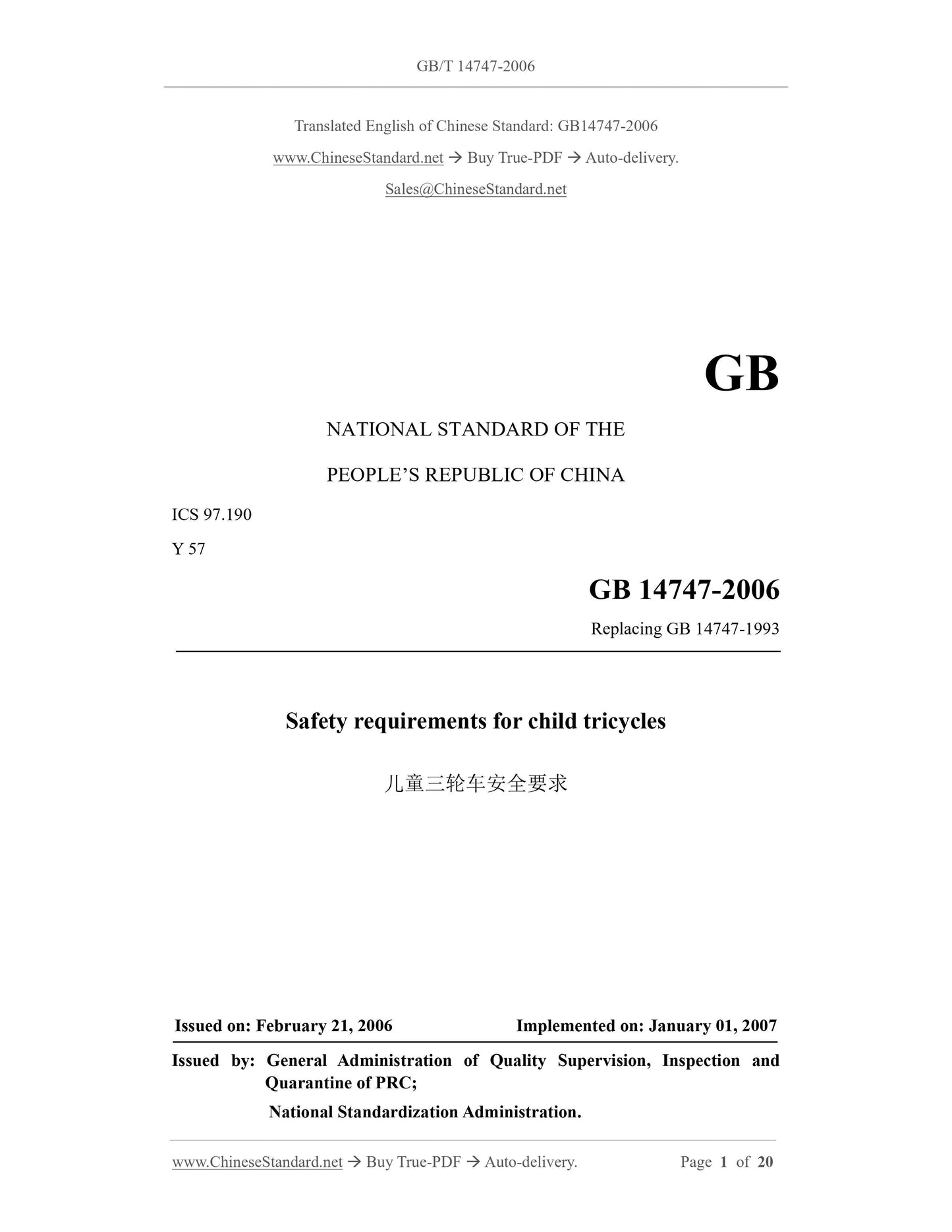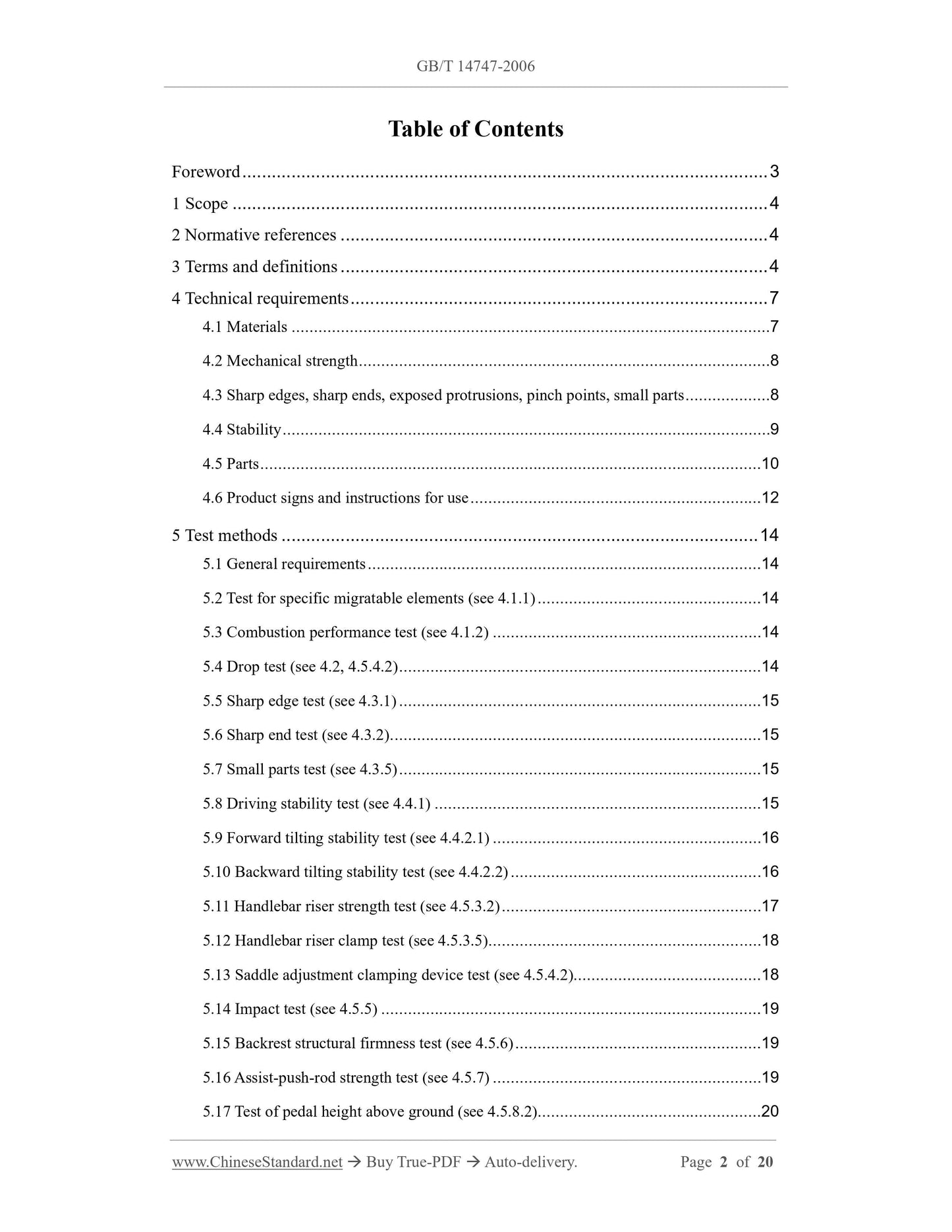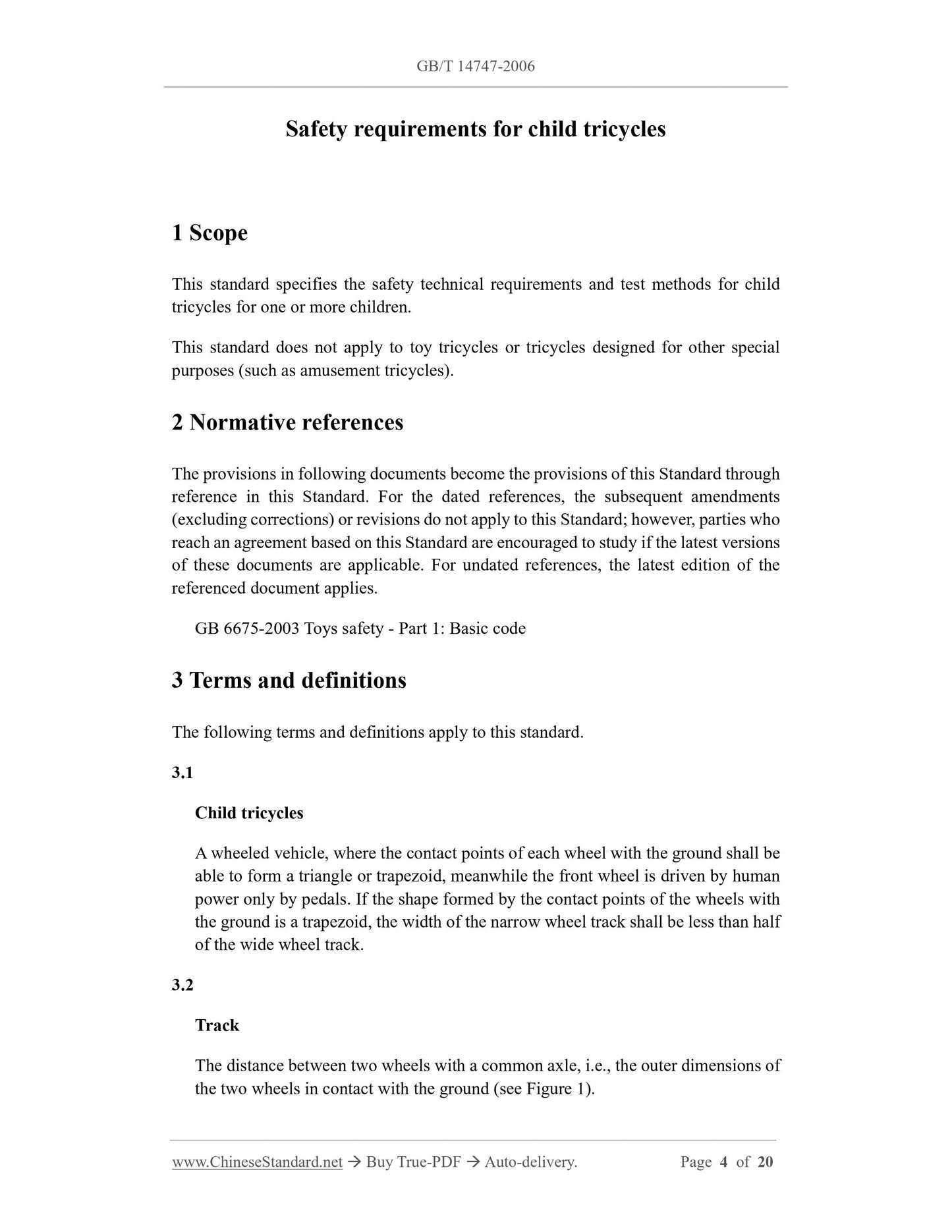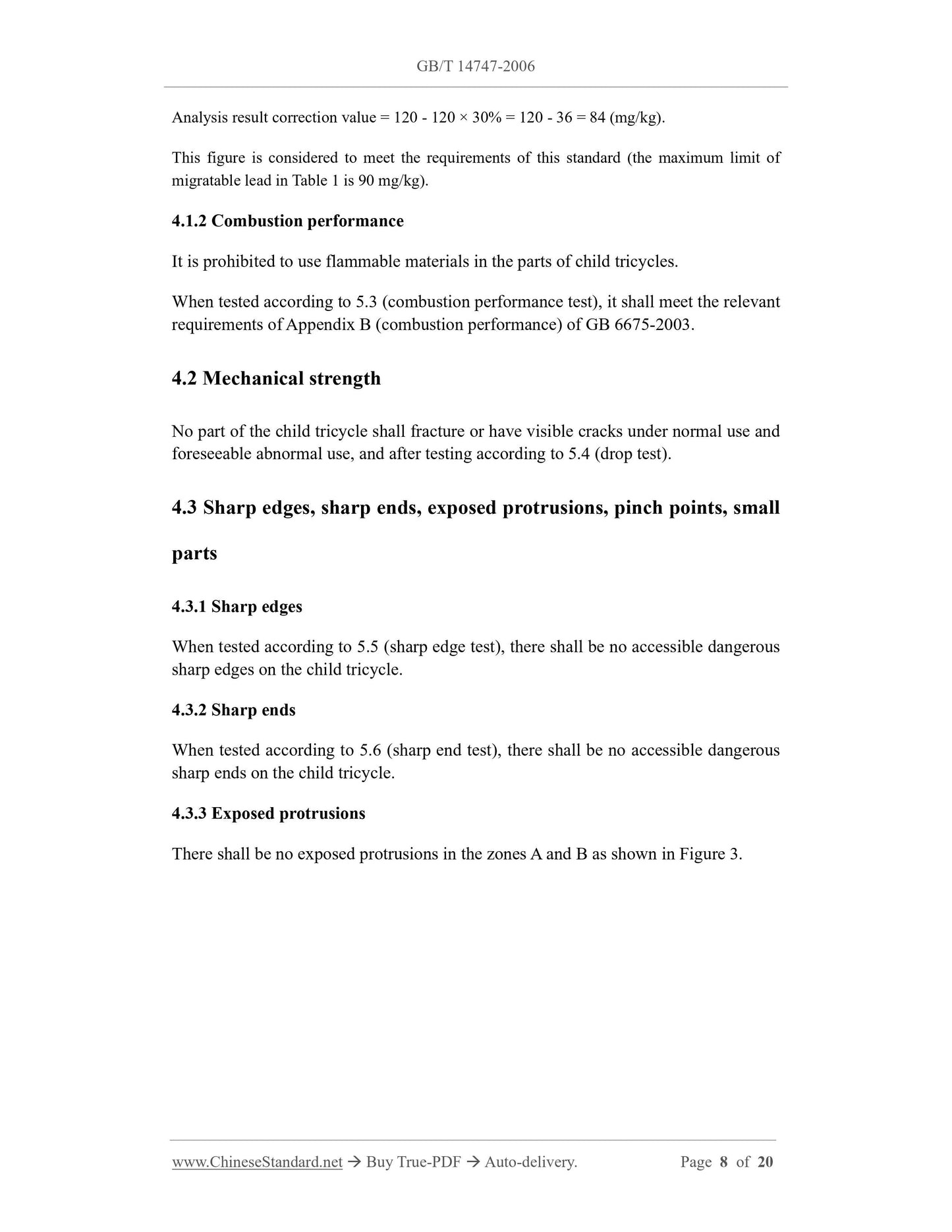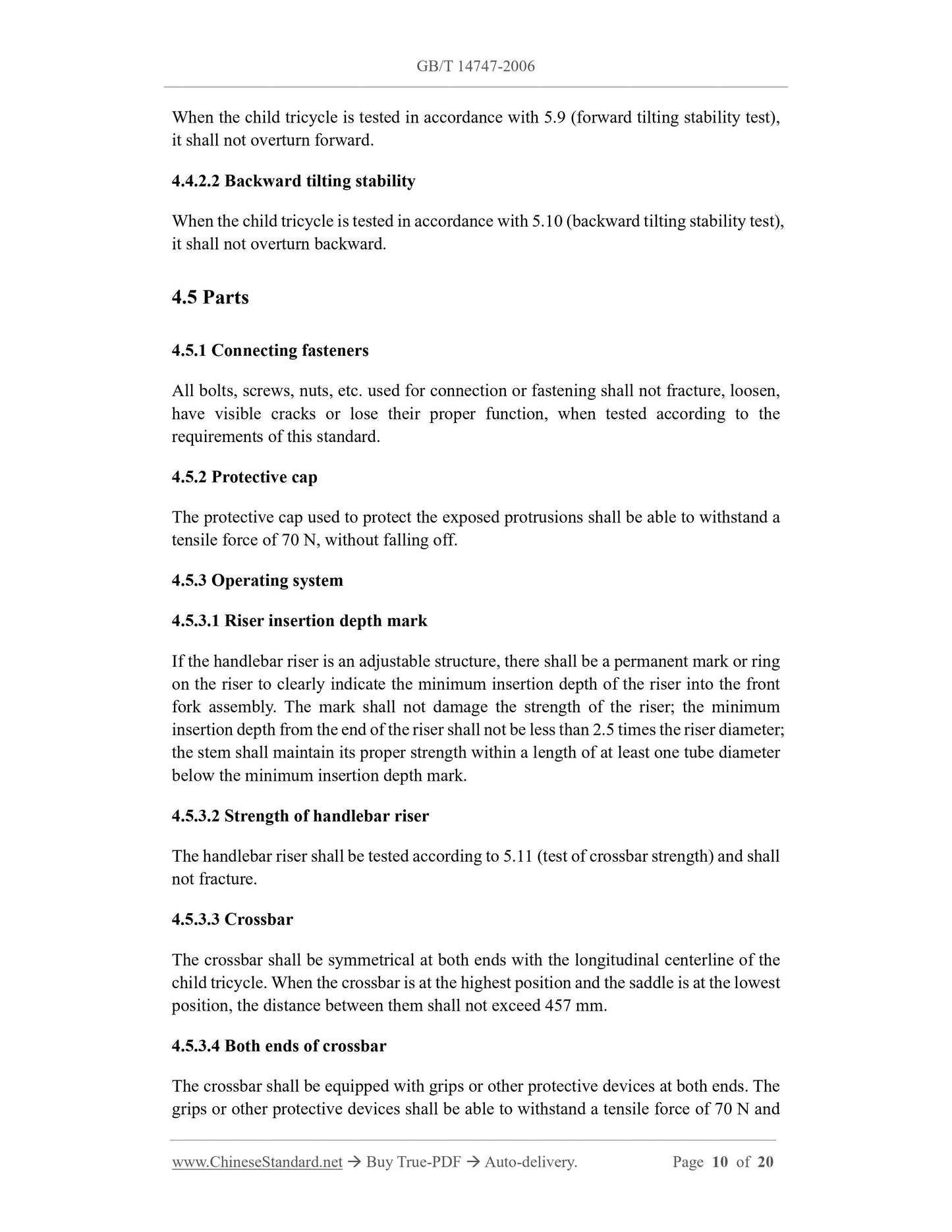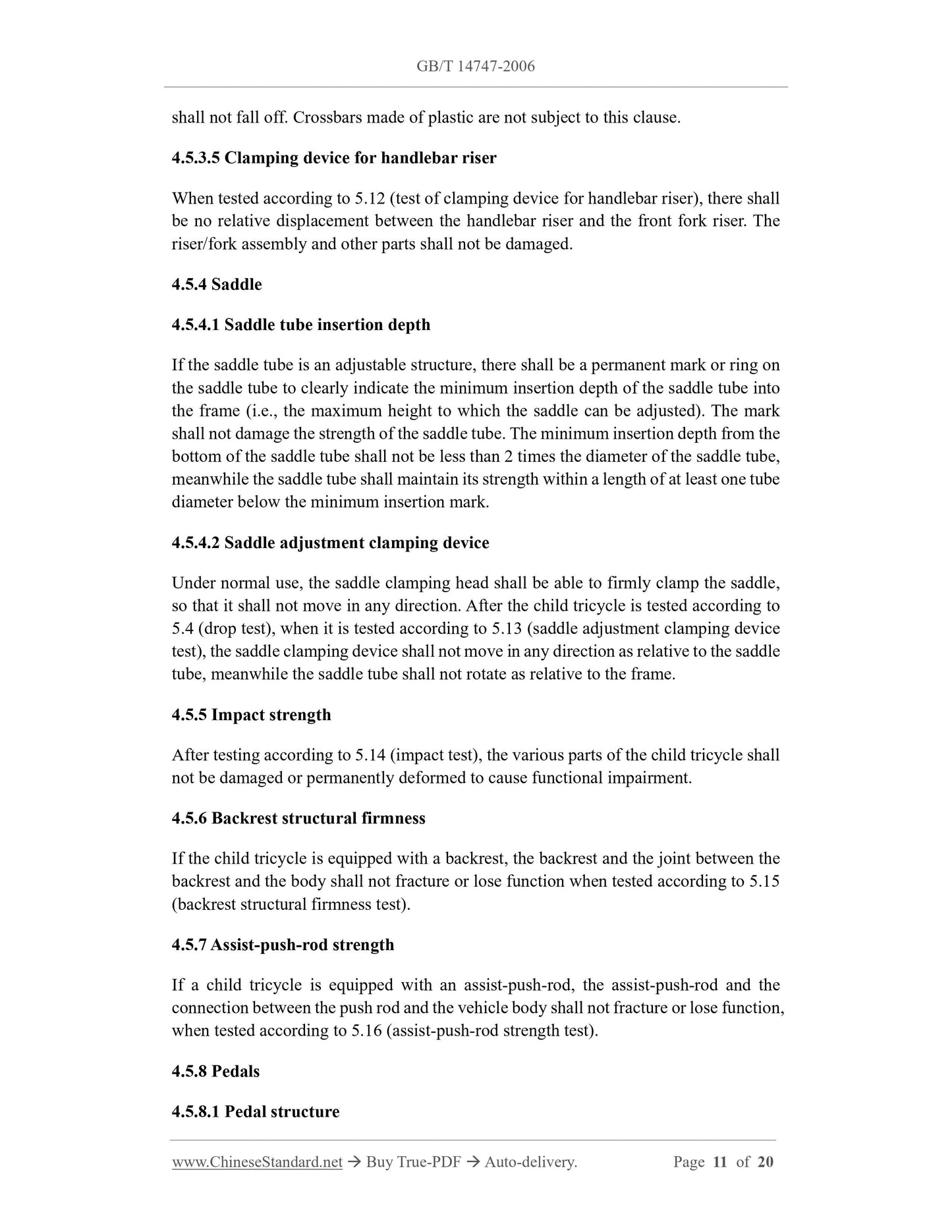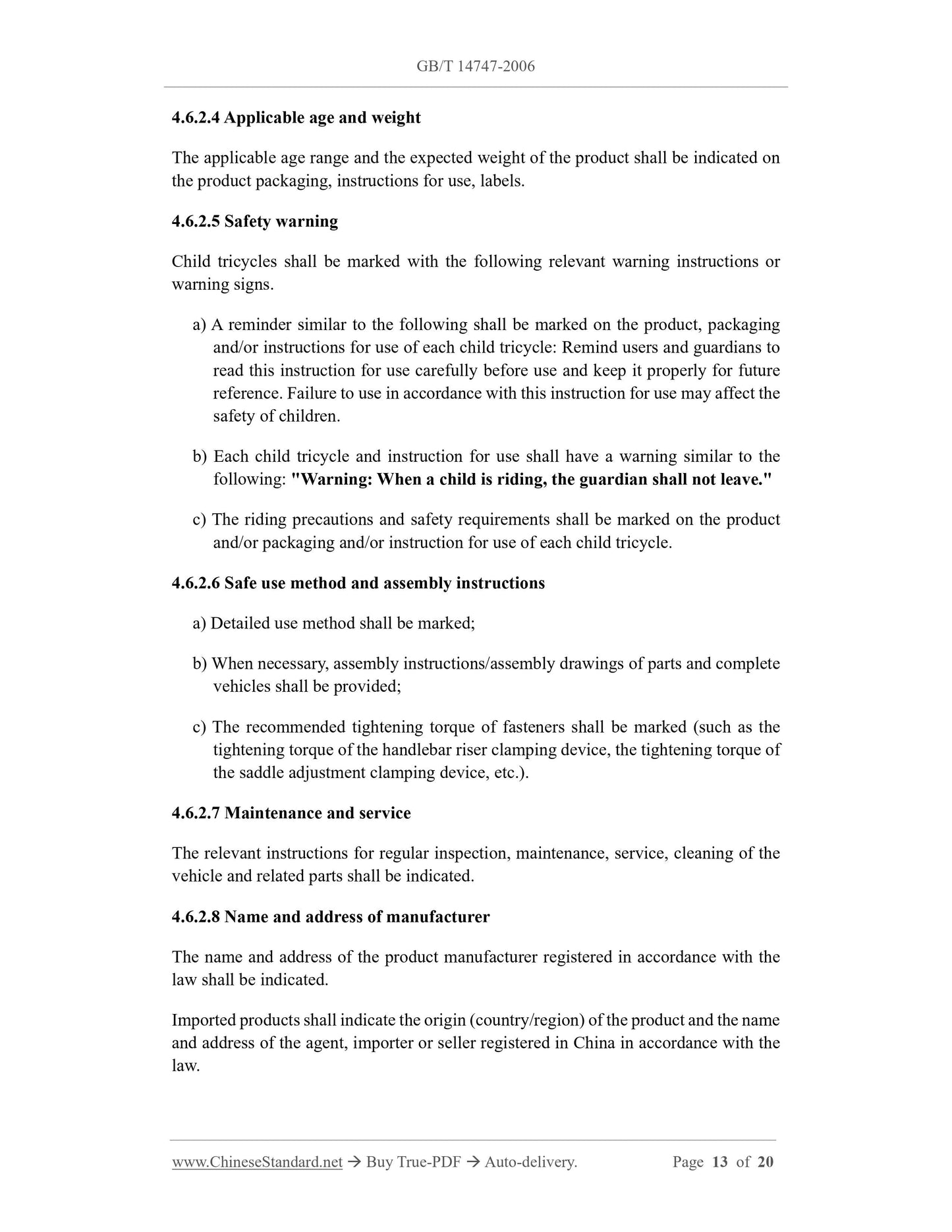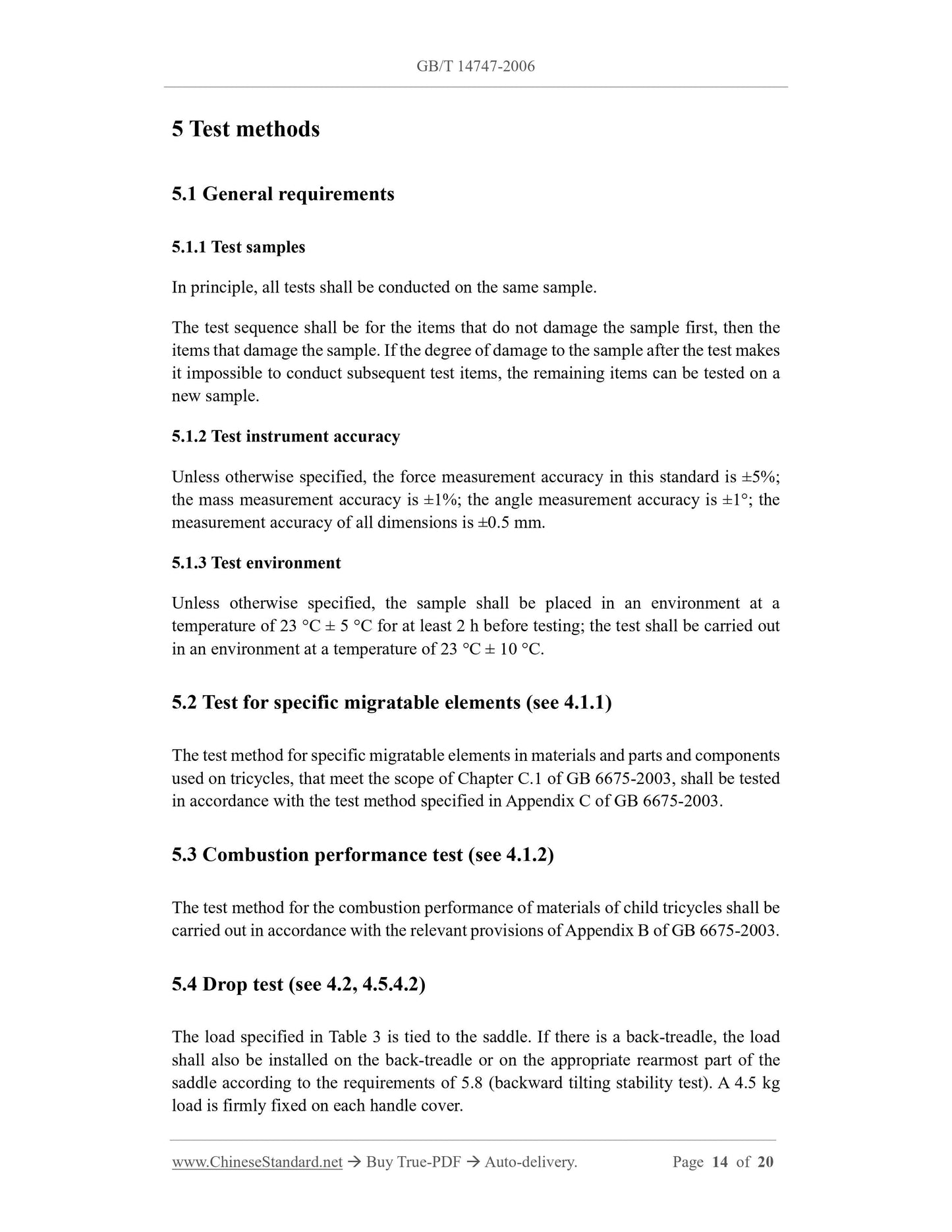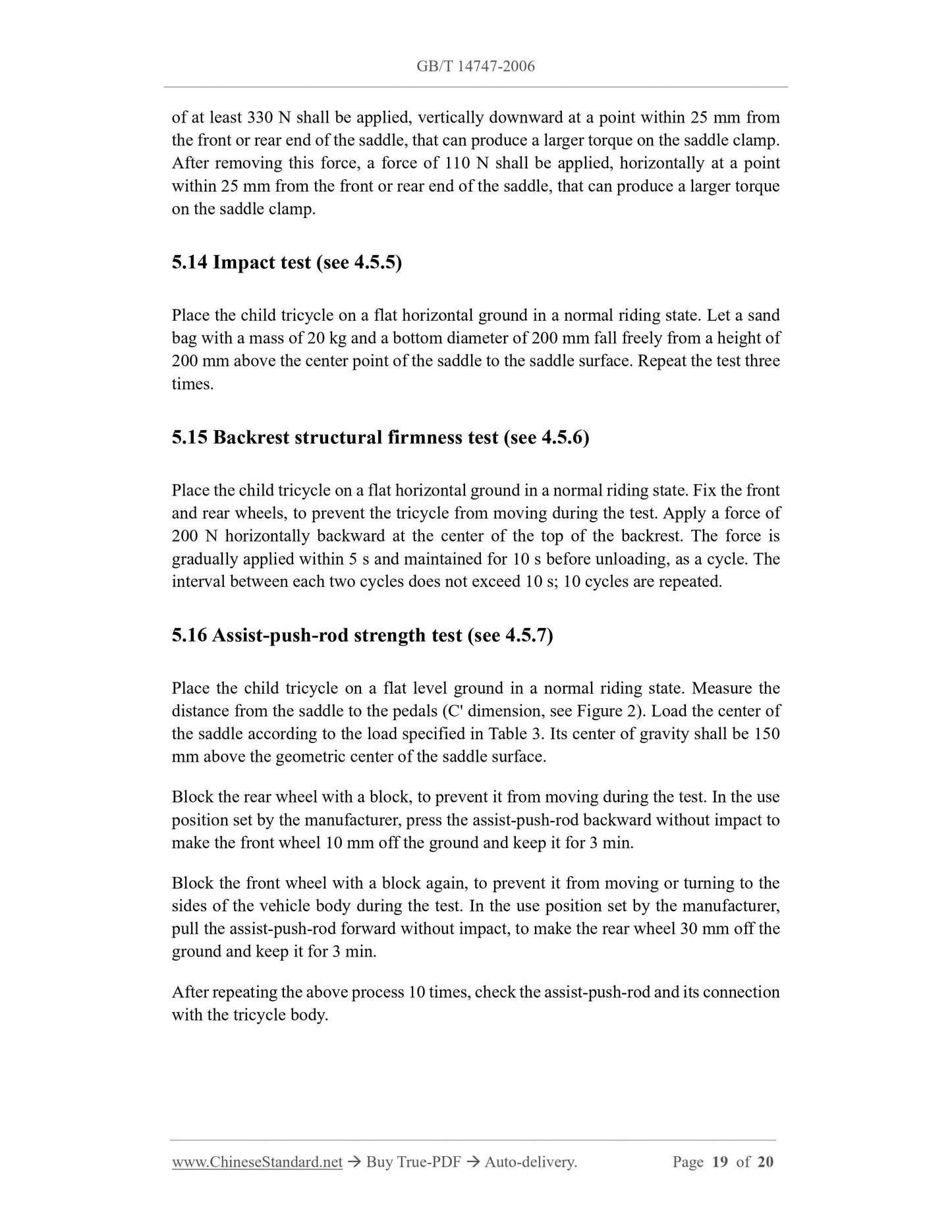1
/
of
9
www.ChineseStandard.us -- Field Test Asia Pte. Ltd.
GB 14747-2006 English PDF
GB 14747-2006 English PDF
Regular price
$360.00
Regular price
Sale price
$360.00
Unit price
/
per
Shipping calculated at checkout.
Couldn't load pickup availability
GB 14747-2006: Safety requirements for child tricycles
Delivery: 9 seconds. Download (and Email) true-PDF + Invoice.Get Quotation: Click GB 14747-2006 (Self-service in 1-minute)
Newer / historical versions: GB 14747-2006
Preview True-PDF
Scope
This standard specifies the safety technical requirements and test methods for childtricycles for one or more children.
This standard does not apply to toy tricycles or tricycles designed for other special
purposes (such as amusement tricycles).
Basic Data
| Standard ID | GB 14747-2006 (GB14747-2006) |
| Description (Translated English) | Safety requirements for child tricycles |
| Sector / Industry | National Standard |
| Classification of Chinese Standard | Y57 |
| Classification of International Standard | 97.190 |
| Word Count Estimation | 15,166 |
| Date of Issue | 2006-02-21 |
| Date of Implementation | 2007-01-01 |
| Older Standard (superseded by this standard) | GB 14747-1993 |
| Quoted Standard | GB 6675-2003 |
| Regulation (derived from) | Announcement of Newly Approved National Standards No. 3, 2006 (No. 90 overall) |
| Issuing agency(ies) | General Administration of Quality Supervision, Inspection and Quarantine of the People's Republic of China, Standardization Administration of the People's Republic of China |
| Summary | This Chinese standard relates to a child or more children tricycle ride safety technical requirements and test methods. |
Share
